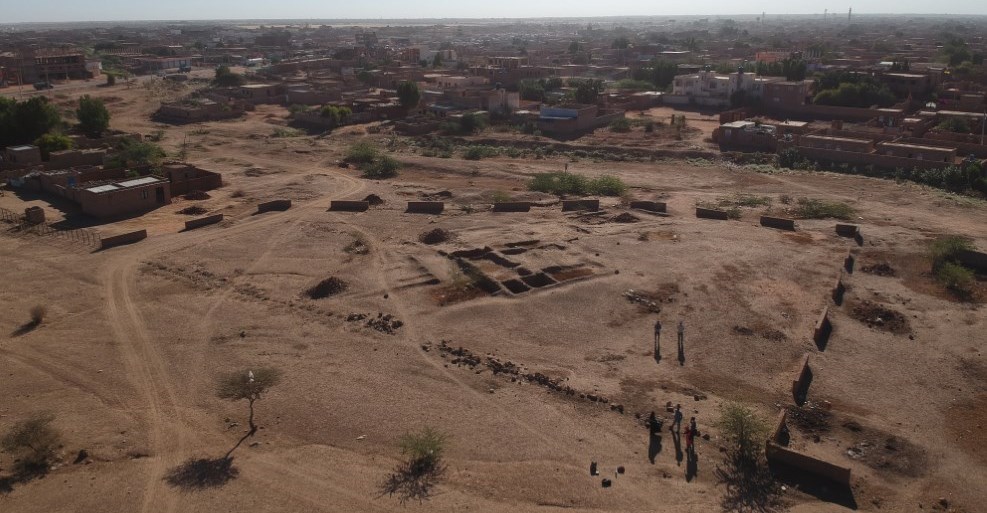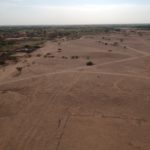The first season of excavations conducted by the Polish Centre of Mediterranean Archaeology, University of Warsaw in Soba, Sudan has begun. The project is carried out as part of the National Science Centre Opus grant awarded to Dr. Mariusz Drzewiecki, entitled “Soba – the heart of the kingdom of Alwa. The spatial organization of medieval capital city on the Blue Nile”.
Soba was the capital of Alwa, a medieval Nubian kingdom. The two other kingdoms of this region were Nobadia with the capital in Faras and Makuria with the capital in Dongola. Prof. Kazimierz Michałowski directed the famous excavations in Faras, and PCMA missions have worked in Dongola since 1964, uncovering magnificent buildings, churches, monasteries and workshops, but Soba remains almost unknown from an archaeological perspective. It is estimated that in its heyday, the city covered approximately 275 ha. Only 1% of its area has been investigated to date.
The project aims to study in detail the topography of Soba, determine where each city quarter was located and how they were organized. It will examine the hypothesis that the city’s layout was the result of its special function. The researchers will establish whether, as in the case of Dongola, the city was divided into areas with different purposes, e.g., a royal complex, religious centers, residential quarters inhabited by different social groups, production and workshop areas. The metropolitan character of Soba is indicated not only by analogies with the capitals of Makuria and Nobadia but also by accounts of Arabic travelers. Apart from medieval structures visible on the surface, numerous hills covered with bricks or debris, probably the remains of monumental buildings, were also recorded during earlier surveys. It is thus, undoubtedly, a site with enormous potential.
The project is interdisciplinary and requires appropriate research methods. A geophysical prospection will be carried out on the site. After tests conducted during a preliminary reconnaissance, the magnetic method was selected. Photogrammetry will also be used in the identification of the city’s topography; photographs taken from a drone are processed using the Agisoft software, which creates 3D models of the terrain. This will allow the researchers to mark out excavation areas and determine the best way to preserve the remains of the medieval city. Due to progressive urbanization, in the last 30 years, modern architecture has covered half the site, which is why both the excavations and safeguarding are necessary.
An important aspect of the fieldwork is the cooperation with local inhabitants. The majority of the site is covered with arable fields and farmhouses, and since the medieval architecture of Soba lies just below the surface, the local population may give the researchers valuable information about the location of objects and structures. The team includes an ethnologist who is in charge of the task.
The grant-funded research is planned for three years. The current season of fieldwork will last until the middle of December. The research team consists of specialists from several Polish scientific institutions. The project is financed by the National Science Centre (contract no. UMO-2018/29/B/HS3/02533) and realized by a consortium consisting of the Polish Centre of Mediterranean Archaeology, University of Warsaw and the Institute of Archaeology and Ethnology, Polish Academy of Sciences.





